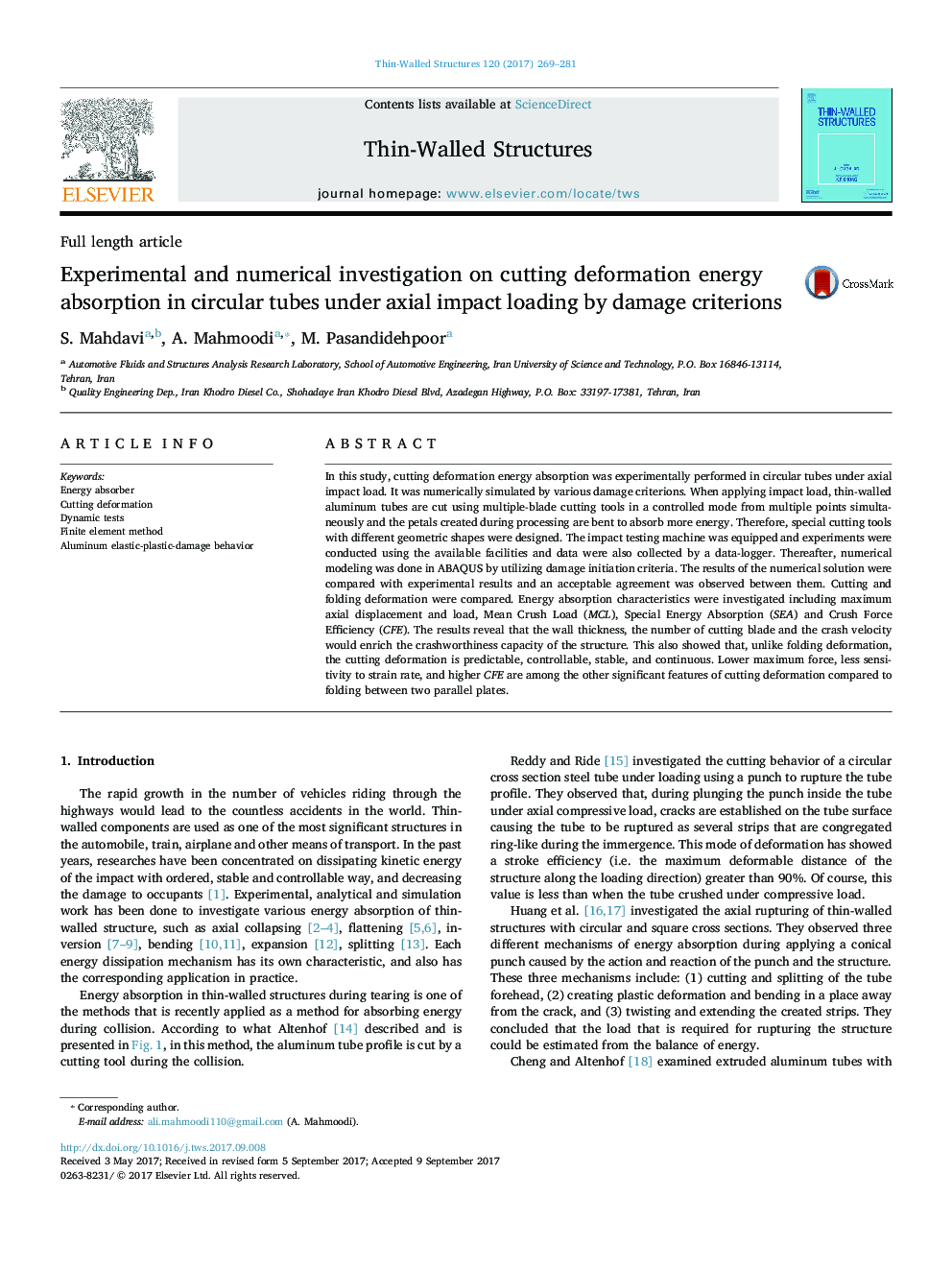| Article ID | Journal | Published Year | Pages | File Type |
|---|---|---|---|---|
| 6778768 | Thin-Walled Structures | 2017 | 13 Pages |
Abstract
In this study, cutting deformation energy absorption was experimentally performed in circular tubes under axial impact load. It was numerically simulated by various damage criterions. When applying impact load, thin-walled aluminum tubes are cut using multiple-blade cutting tools in a controlled mode from multiple points simultaneously and the petals created during processing are bent to absorb more energy. Therefore, special cutting tools with different geometric shapes were designed. The impact testing machine was equipped and experiments were conducted using the available facilities and data were also collected by a data-logger. Thereafter, numerical modeling was done in ABAQUS by utilizing damage initiation criteria. The results of the numerical solution were compared with experimental results and an acceptable agreement was observed between them. Cutting and folding deformation were compared. Energy absorption characteristics were investigated including maximum axial displacement and load, Mean Crush Load (MCL), Special Energy Absorption (SEA) and Crush Force Efficiency (CFE). The results reveal that the wall thickness, the number of cutting blade and the crash velocity would enrich the crashworthiness capacity of the structure. This also showed that, unlike folding deformation, the cutting deformation is predictable, controllable, stable, and continuous. Lower maximum force, less sensitivity to strain rate, and higher CFE are among the other significant features of cutting deformation compared to folding between two parallel plates.
Related Topics
Physical Sciences and Engineering
Engineering
Civil and Structural Engineering
Authors
S. Mahdavi, A. Mahmoodi, M. Pasandidehpoor, J. Marzbanrad,
